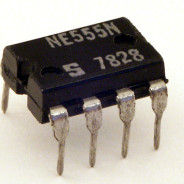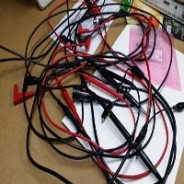The Electronics Blog
All my posts on electronics, radio, microcontrollers, computers and all the things electrons are attracted to. I must be an electron. . . .’cuz I’m attracted to all those too!
Just a note about. . .
So I updated PHP to 7.1, WordPress to 5.4.x, added SSL certs, and reviewed the whole site to see how I can change it. A lot of ideas and wishes are swirling around. I may go nuclear and just re-do from scratch. Oh my!
So, now to come up with a plan. . . .
Busy, busy, busy. . .
Wow, it’s been 2 months since my last confession! Yes. . .busy, busy, busy. Between work and work and work, there’s barely anytime to work. Just look at this mess on my workbench. Every time I set out to clean and organize the bench, I get caught up in a software issue or a capacitor replacement or a programming problem or the washer blowing a circuit board. Like Gilda Radner so profoundly exclaimed, “It’s always something!”
And this weekend is Field Day so there won’t be much organizing soon. But I pledge that I will get this straightened out within the next 30 days or I’ll have to swear again in 30 days! Oh my!
Related articles
- Workbench v1 (ajvtech.com)
- Building Your WorkBench (makezine.com)
- How to use a desoldered capacitor? (electronics.stackexchange.com)
- Tracking down bad caps (ajvtech.com)
SMD Breadboarding
So I watched Dave Jones’ EEVblog #555 video – 555Timer Kit where he puts together a kit of resistors, NPN and PNP transistors that recreates the famous 555 Timer integrated circuit in a large scale. It was interesting and nostalgic because everyone starting in electronics plays with a 555. So I figured I might go down to the bench, look up a circuit and try something new. . . .especially since I’ve got some new test equipment to play with, explore and learn the circuits in a new light.
So I got the breadboard out and went looking for a 555 or 556 laying around in the parts drawers. Well I did find some but they were all SMD. . . .which don’t quite fit into the breadboard. Luckily, I also found a little pouch from Schmartboard which included a SOIC to DIP adapter. It’s one of those “Gee why didn’t I think of this” type of product. As more and more components come less and less in DIP packages, I think I’ll set up some of my favorite play-around-with parts to have handy while breadboarding ideas and projects.
Related articles
- Not Your Typical Breadboard (sktaylor15.wordpress.com)
- Going from Schematic to Breadboard (makezine.com)
- Getting started with electronics – virtual breadboards with IC’s? (electronics.stackexchange.com)
- Connector to temporary connect SMD IC? (electronics.stackexchange.com)

ARRL DX SSB 2014 Fun and Earache
I was active this weekend in this year’s ARRL DX single-sideband contest. . . . .well at least active for me. I’m not a hardcore contester, but besides meals and sleep and a few hours of TV with the XYL, (wife for you non-hams), I was pretty much listening and sitting at pile-ups waiting for the big boys to clear out. Patience had its rewards! I worked 22 new countries and 61 new prefixes over the weekend! Even more interesting was that I could walk down the bands and work several stations first on 10m, then 15m and then 20m. If I had antennas for 40/80/160 meters, I probably could have worked them some more.
One black eye was how inconsiderate some hams, or maybe they’re radio pirates, could be. I’d be straining my ears listening to make contact with a far-off station when a whine blats the earphones off my head! Sure I know I have to wait for the high power club stations with multiple beams to make their contacts….yes I’m jealous. But, why would someone just come on frequency and start tuning their rig….and take forever to tune up. If I had my transceiver tuning for that long I’d surely blow the finals. Two days layer and my ears are still ringing!
And of course there is always the recurring contesting QRM, or interference. It’s not everyday, sadly, that you hear so many hams on the air at one time. With propagation playing a big part, I know some of this is unintentional. But some of us need to remember the test questions on the FCC exams about how wide is a SSB or CW or PSK signal. Unfortunately there are the intentional and irresponsible ones who just do it because they can.
Overall a contest is a great way to test out the equipment, the antenna(s) and your operating efficiency. So if you don’t have your license yet, listen in and tune your radio and your ears. If you are licensed, jump in, make a contact or two. Just remember to listen and listen some more before transmitting. You could save someone’s ears! 😉
Related articles
- That was fun! (amateurradio.com)
- Work the World this Weekend During the ARRL International DX Contest (CW)! (arrl.org)
- Make Your Voice Heard During the ARRL International DX Contest (Phone), March 1-2! (arrl.org)
- Propagation de K7RA (southgatearc.org)

Test Lead Snarl
So I was putting together all the test equipment on the bench. Each piece of gear came with their own set of test leads. It wasn’t long before they began getting all snarled up. . .the BNC leads with the banana plug leads with the alligator clip leads with the adapters. Rather than wait and spend 20 bucks for a test lead holder, I dug through all my pegboard tool holders and come up with a good one.
Since many of the leads were over 6 feet long, (2 to 3 meters for those outside the US) I needed to put the holders up a ways so they could hang straight. I decided to clamp a small piece of pegboard at ceiling height about 8 feet and use a few tool holders I had lying around. They’re cheap at Harbor Freight.
I first used up some left over pieces of heat shrink tubing to give each leg a rougher finish than the smooth steel. I also kept each piece of tubing a little bit longer to cover up any sharp edges that me dig into the test lead insulation. Check out the pictures below. I think it worked out nicely. I can’t put a cost to it because I had everything on hand. At least the bench is neater!
Dead End PC?
I finally ran into one. Ok, so it is a 9-year old Dell Dimension XPS Gen 4, but I’ve upgraded her over the years…XP to Vista to Win7 to Win8. And then I wanted to take her just one more step…Win8.1. And no!
Sorry, you can’t install the update because it’s not supported by your computer’s CPU.
I guess somewhere around the beginning of 2004, Intel added all this stuff to their chip: Physical Address Extension (PAE) mode, No-eXecute (NX), CMPXCHG16b support and Streaming SIMD Extensions 2 (SSE2). And the BIOS needs Data Execution Prevention (DEP), which apparently was not a stringent requirement for 64-bit Windows 8. Hard to believe a service pack would change hardware requirements for an operating system.
Another strange thing is that the 32-bit version does not have the same hardware requirements, so I can downgrade. But the smarter solution is to move this machine to Linux. So rather than trashing your old PCs, or relegating it to an attic or closet, just install any one of the Linux distros. I chose Ubuntu for this machine but also use Linux Mint on others. Think about it….just because your PC won’t upgrade Windows anymore, try a move to Linux. . . .you might like it.
1/16/14: Some additional info:
Windows XP Cyber Time Bomb Set For April 8, 2014
Microsoft offers brief reprieve to Windows XP users – with security fixes until July 2015
1/24/14: And more info:
Microsoft: Unplugging Windows XP PCs From Internet Won’t Keep Them Safe
The death of Windows XP will impact 95 percent of the world’s ATMs
Interesting info. . . .

New Tech Toys Pt.2
On to the workbench! The holidays brought an abundance of technology which I started to describe in Part 1: Overcome with technology. Now I’m headed down to the workbench.
Since I work on mobile and desktop radios, transceivers and associated equipment, many of which use 12 – 15VDC, I got a power supply dedicated to that voltage and amperage range. And since much of that equipment just plugs into the vehicle’s cigarette lighter, I chose an MFJ-4245MV which just happens to have a cigarette lighter jack built right in!
While testing the transmit side of these radios, you somtimes need to measure the output power. So I got a dummy load / wattmeter to measure the wattage while transmitting into a 50 ohm “antenna” without going out on the air. I chose the MFJ-267 since it could handle up to 1500 kilowatts only the way up to the UHF range of 650Mhz.
You would also like to see if the rig is at or near the frequency it says it is transmitting at….so along came a frequency counter, DVM13MFC2 by Velleman. While not the cheapest freq counter, I usually don’t need the great precision requiring counters costing thousands!
To round out my bout of new test equipment, I got a special combo price on an Owon digital oscilloscope and waveform generator. The model AG1022 Arbitrary Waveform Generator outputs includes sine, square, ramp, noise among others and can modulate AM, FM, PM, FSK and PWM. It’s a great little generator for injecting signals into a circuit and tracking them down at the outputs with an Owon SDS7102 100Mhz oscilloscope. It has a nice 8″ LCD screen, a 1Ghz sampling rate, and a USB port to connect to a PC. If I need, it has a battery option to take portable, but I don’t foresee needing that even though it came with a carrying case.
Now remember, before venturing into any of these, make sure you get at least one or two multimeters. I collect them from Harbor Freight every time they have a “buy anything, get a free multimeter” sale. There’s 2 on the bench, one in the shack, another in the truck, and yet another in each toolbox. I also have a bit higher end Mastech DMM that also checks temperature, capacitance and sound levels.
But for capacitancce I use an ESR meter from Atlas, the ESR70, which is great for testing caps in circuit (with the power off though!). Atlas also makes a great semiconductor analyzer, the Dca75, which can also be connected to a PC for low current curve-tracing functions.
So that covers all the new test equipment on the bench. I know I promised before, but I’m still working on a video tour of the “laboratory!” Stay tuned as they say. . . .
Related articles

Overcome with technology!
My-oh-my I was inundated with technology throughout December! It all started in November when I received a Kindle Fire HDX 8.9, ordered in September. That kept me busy through Thanksgiving as I ooh and ah’d and converted my iPad friends. But even though the screen res is great and it’s fast, it still has the same problems as Windows tablets and phones. . . .lacking apps in the Amazon Store. If they would just open the platform to Google’s Play Store, it would be a great tablet. I still can’t get all the apps I can run on the Samsung Galaxy Note 3. . . .which brings me to the 1st week in December.
I traded in my HTC WinPhone for the Note 3. I really liked the Winphone and probably would have upgraded to a Win8 phone, but Verizon didn’t carry any of the newer models like Nokia’s 1020 and/or 1520 and couldn’t tell me if they ever would, so I moved over to an Android phone. Luckily my wife moved from an iPhone to the Samsung at the same time, so we’ve each been learning the new phones. My wife is exploring, finding and learning much faster than me. . . . mostly because I have more toys to figure out.
Which brings me to the ham shack. I’m in the process of setting up a new Icom IC-9100. Since this is an upgrade from the 30-year old Kenwood TS-930s I had, which had its own power supply built-in, I brought up a 13.8V ps from my workbench. I quickly tired of the loud fan that ran all the time. I took that back to the bench and got a Samlex 1235M. The fan doesn’t run unless it starts getting warm and when it does kick in, it is whisper quiet. One other addition to the shack was a MFJ-993B auto-antenna tuner. Although the Icom has a built in tuner, I wanted to experiment with some off-the-wall antenna designs that may have 25:1 SWR readings…a bit much for the rig’s internal tuner, but mild for the external MFJ, which can handle up to 64:1.
Well, there’s also a few additions to the workbench, but I’ll handle the test instruments on the bench in another post. For now here’s the pics from the shack:
Some related articles. . . .

W2NSD (SK)
It was sad to hear that Wayne Green, W2NSD passed away last Friday the 13th. I met him once at a hamfest in the 70’s, but I was an avid reader of his editorials in his magazines. While he publishes many over the years, I subscribed to 73 Magazine for many of my younger years as a ham. My interests then began moving more to computing and PCs so I started reading Byte Magazine, the first magazine that many computer geeks and experimenters read. Apple, Compaq and Microsoft weren’t around yet, so much of the magazine was about building and programming your own from scratch. On my.
Wayne was 91 years old. He was a brilliant thinker and was always looking for the next big thing. And he usually found it before everyone else. The history of amateur radio cannot be written without mentioning his name and all that he brought to the hobby. From his website:
Wayne Green passed away on the morning of September 13, 2013 in a peaceful, painless transition from this life on Earth. An eternal optimist, and one who loved to share his neverending zest for life, he was a friend to many and will be missed greatly. Wayne was not afraid of dying and was very much ready to embark on his next great adventure to the afterlife.
73,
W2NSD (Sept 3, 1922 – Sept 13, 2013)
Related articles

What’s a Gadgeteer?
After the Arduino came out and before the Raspberry Pi, there was a subdued hacking platform created by Microsoft called the Gadgeteer. Yes, Microsoft is, deep down, a hacking kind of company. After all, that is the way it started in the software business. And from the beginning it has always had its hands in some sort of hardware, although better known for its operating system and software.
Even though there are several platforms better known to the hacking and maker communities, the Gadgeteer is rather innovative. Projects with the Gadgeteer consist of a mainboard and modules connected via a standard 10 pin connector. And although the software language is on the Microsoft.NET Micro Framework, it is publicly licensed under the Apache License and the hardware designs are under the Creative Commons License. Hardware modules are available from several vendors. There is also Gadgeteer hardware that will play nicely with your Arduino hardware. So the possibilities are intriguing!
Check out this article: Gadgeteer – Microsoft’s Hardware Hacking Platform You Haven’t Heard Of at MakeUseOf.com. I’m glad to see the Gadgeteer get some press. It’s been hiding behind the shed too long!
Interesting Reading. . . .









































































